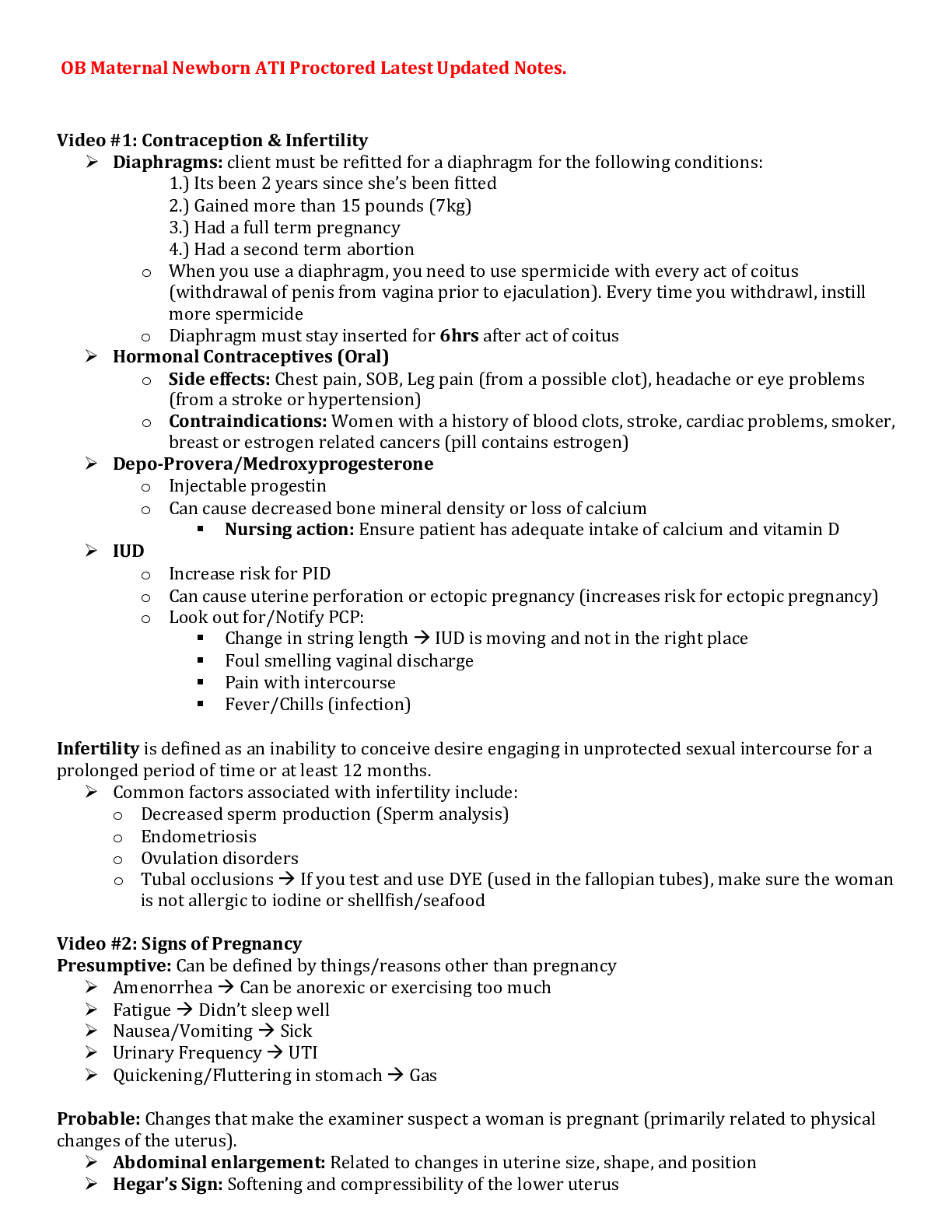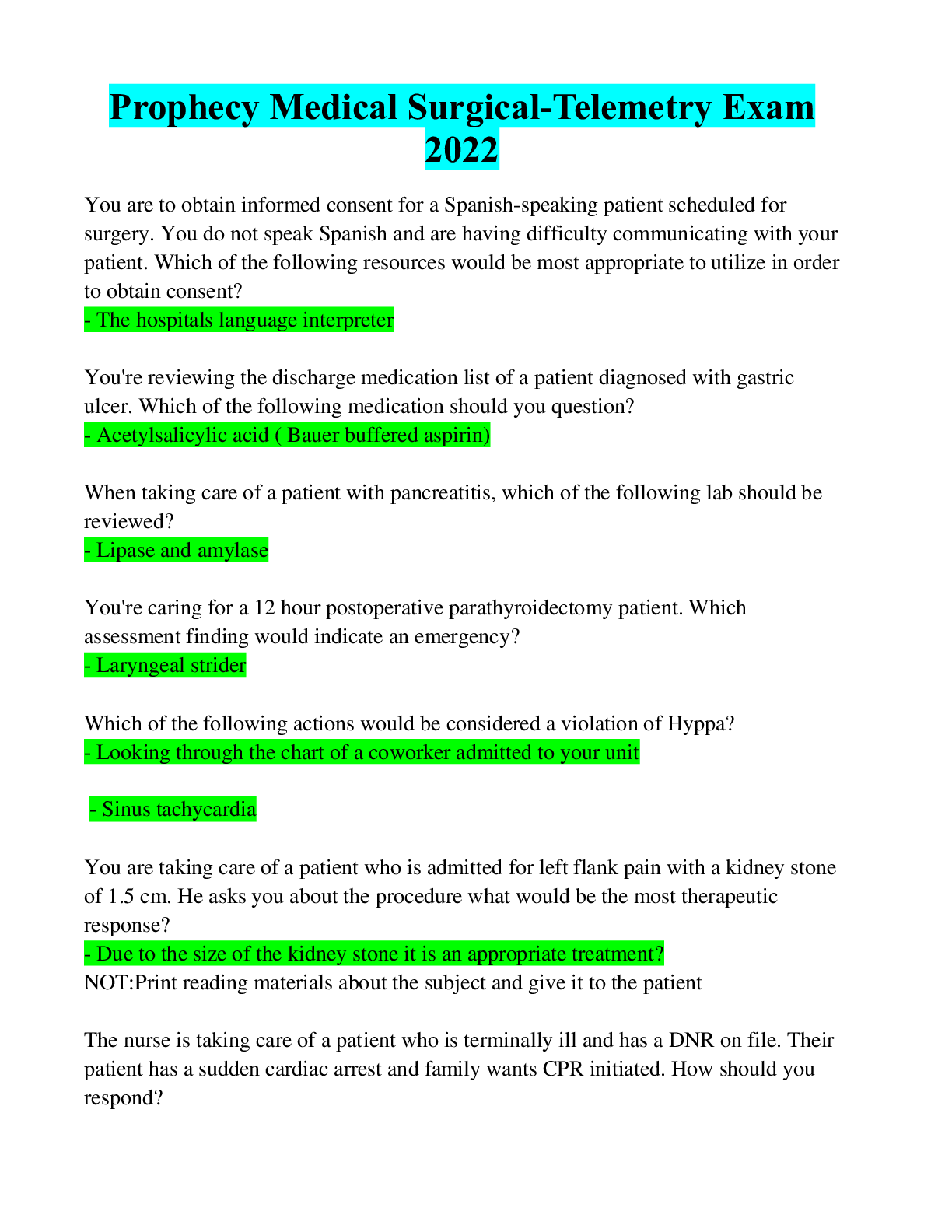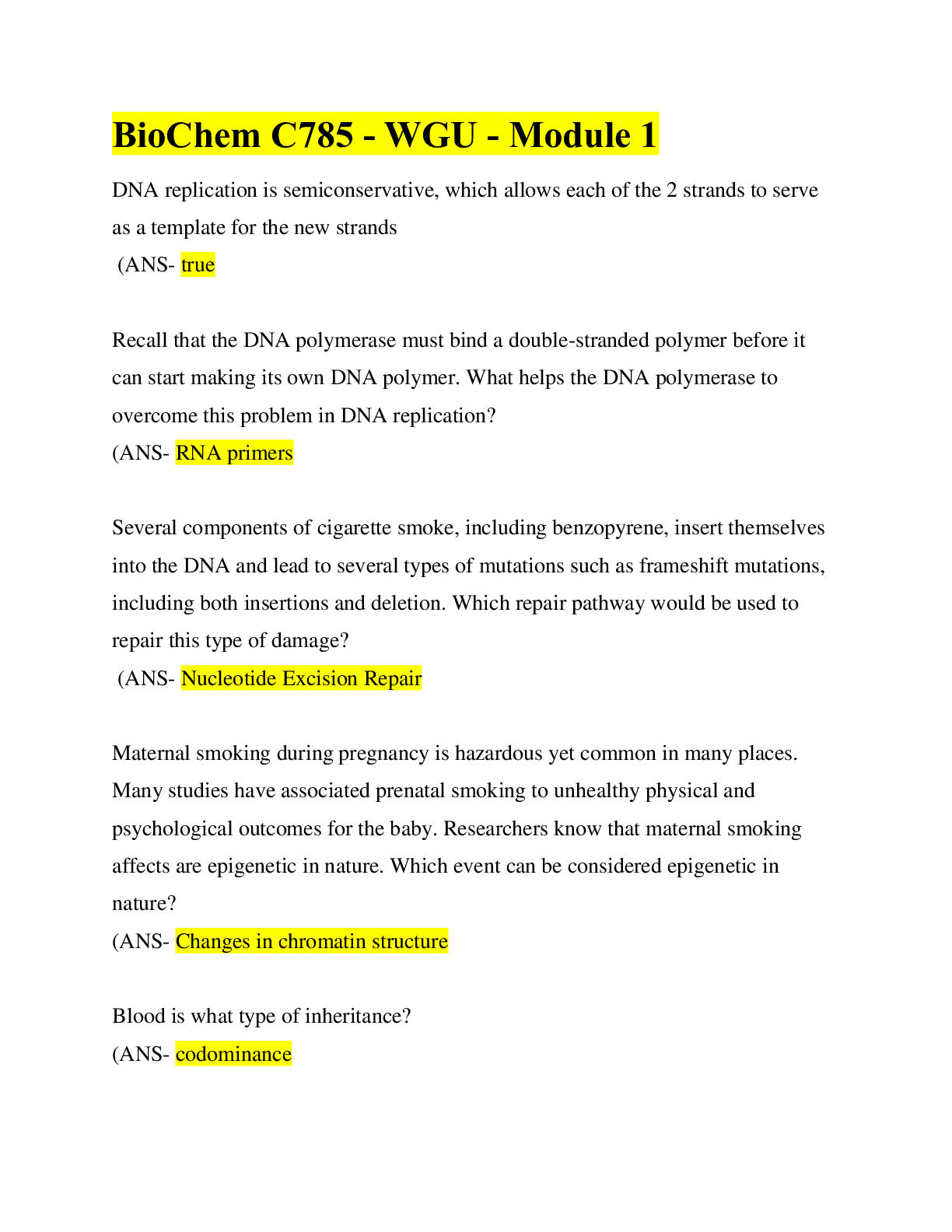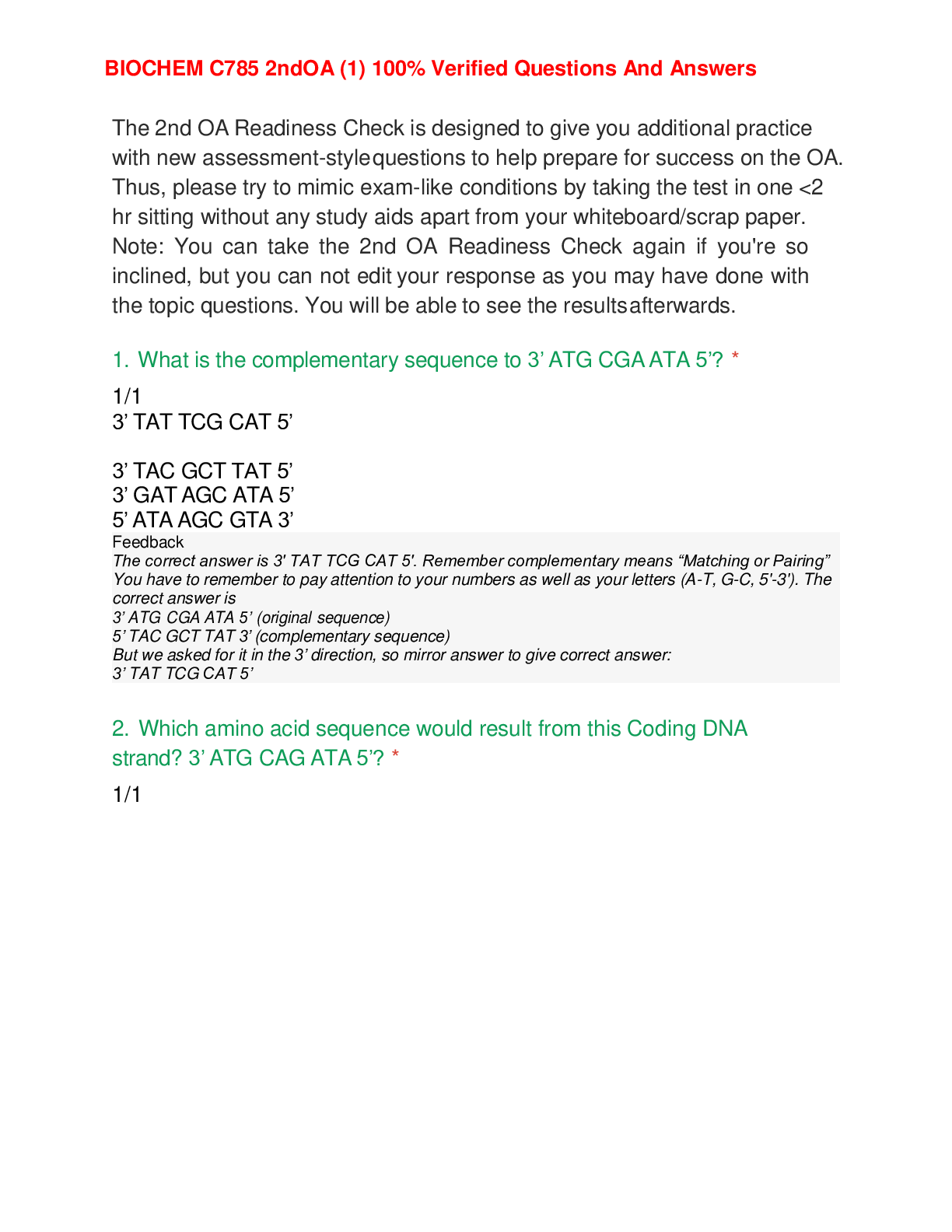*NURSING > STUDY GUIDE > OB Maternal Newborn ATI Proctored Notes (All)
OB Maternal Newborn ATI Proctored Notes
Document Content and Description Below
Video #1: Contraception & Infertility Ø Diaphragms: client must be refitted for a diaphragm for the following conditions: 1.) Its been 2 years since she’s been fitted 2.) Gained more than 15 ... pounds (7kg) 3.) Had a full term pregnancy 4.) Had a second term abortion o When you use a diaphragm, you need to use spermicide with every act of coitus (withdrawal of penis from vagina prior to ejaculation). Every time you withdrawl, instill more spermicide o Diaphragm must stay inserted for 6hrs after act of coitus Ø Hormonal Contraceptives (Oral) o Side effects: Chest pain, SOB, Leg pain (from a possible clot), headache or eye problems (from a stroke or hypertension) o Contraindications: Women with a history of blood clots, stroke, cardiac problems, smoker, breast or estrogen related cancers (pill contains estrogen) Ø Depo-Provera/Medroxyprogesterone o Injectable progestin o Can cause decreased bone mineral density or loss of calcium § Nursing action: Ensure patient has adequate intake of calcium and vitamin D Ø IUD o Increase risk for PID o Can cause uterine perforation or ectopic pregnancy (increases risk for ectopic pregnancy) o Look out for/Notify PCP: § Change in string length à IUD is moving and not in the right place § Foul smelling vaginal discharge § Pain with intercourse § Fever/Chills (infection) Infertility is defined as an inability to conceive desire engaging in unprotected sexual intercourse for a prolonged period of time or at least 12 months. Ø Common factors associated with infertility include: o Decreased sperm production (Sperm analysis) o Endometriosis o Ovulation disorders o Tubal occlusions à If you test and use DYE (used in the fallopian tubes), make sure the woman is not allergic to iodine or shellfish/seafood Video #2: Signs of Pregnancy Presumptive: Can be defined by things/reasons other than pregnancy Ø Amenorrhea à Can be anorexic or exercising too much Ø Fatigue à Didn’t sleep well Ø Nausea/Vomiting à Sick Ø Urinary Frequency à UTI Ø Quickening/Fluttering in stomach à Gas Probable: Changes that make the examiner suspect a woman is pregnant (primarily related to physical changes of the uterus). Ø Abdominal enlargement: Related to changes in uterine size, shape, and position Ø Hegar’s Sign: Softening and compressibility of the lower uterus Ø Chadwick’s Sign: Deepend violet bluish color of cervix and vaginal mucosa Ø Goodell’s Sign: Softening of cervical tip Ø Ballottement: Rebound of unengaged uterus Ø Braxton Hicks Contractions: False contractions that are painless, irregular, and usually relieved by walking Ø Positive Pregnancy Test: Woman’s hormonal level may not be normal Ø Fetal Outline: Positive: Very distinct things. Ø Fetal Heart Sounds Ø Fetal Heart Beat can be heard Ø Can see the baby with ultrasound Ø Can feel movement in the uterus Naegele’s Rule: LMP – 3 months + 7 days + 1 year Cathy’s Rule: + 9 months + 1 week Know how to find out GTPAL numbers G= Gravidity (# of times a woman has been pregnant PLUS current pregnancy) T= Term Births (How many baby’s were delievered at term 38 WEEKS OR MORE) P= Preterm Births (Below 38 weeks) A= Abortion (spontaneous or not) or miscarriages L= Living children Video #3: Weight Gain & Nutrition During Pregnancy AND Diagnostic Tests During Pregnancy Weight Gain & Nutrition Ø Normal weight gain = 25- 35 pounds Ø Overweight person weight gain = 15- 25 pounds Ø Underweight person weight gain = 28-40 pounds Ø During 1st trimester à A woman should only gain 1-2 kg (2-4 pounds); A woman should not gain 1 pound per week. Ø During 2nd trimester à 1 pound per week is normal; increase caloric intake by 340 calories per day Ø During 3rd trimester à 1 pound per week is normal ; increase caloric intake by 450 calories per day Ø If you are breastfeeding after pregnancy à You still need to eat an extra 300-400 calories per day Ø Intake of FOLIC ACID à Helps prevent Neural Tube Defects (NTD) à Sources: dark green leafy veggies; orange juice Ø Women should increase their fluid intake to 2-3L per day Ø Women should limit their caffeine intake to à 300 mg per day Ø No amount of alcohol is okay Diagnostic Tests During Pregnancy Noninvasive = Full Bladder Invasive = Empty Bladder Ultrasound à Bladder should be full to help sound waves resonate better Amniocentesis à Bladder should be empty [Show More]
Last updated: 2 years ago
Preview 1 out of 12 pages

Buy this document to get the full access instantly
Instant Download Access after purchase
Buy NowInstant download
We Accept:

Reviews( 0 )
$5.50
Can't find what you want? Try our AI powered Search
Document information
Connected school, study & course
About the document
Uploaded On
Aug 27, 2021
Number of pages
12
Written in
Additional information
This document has been written for:
Uploaded
Aug 27, 2021
Downloads
0
Views
70








.png)

.png)



